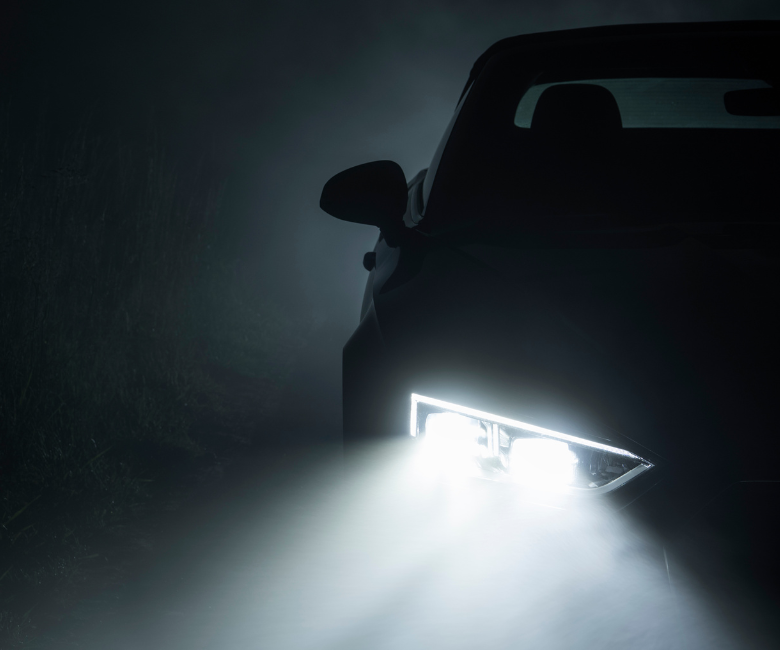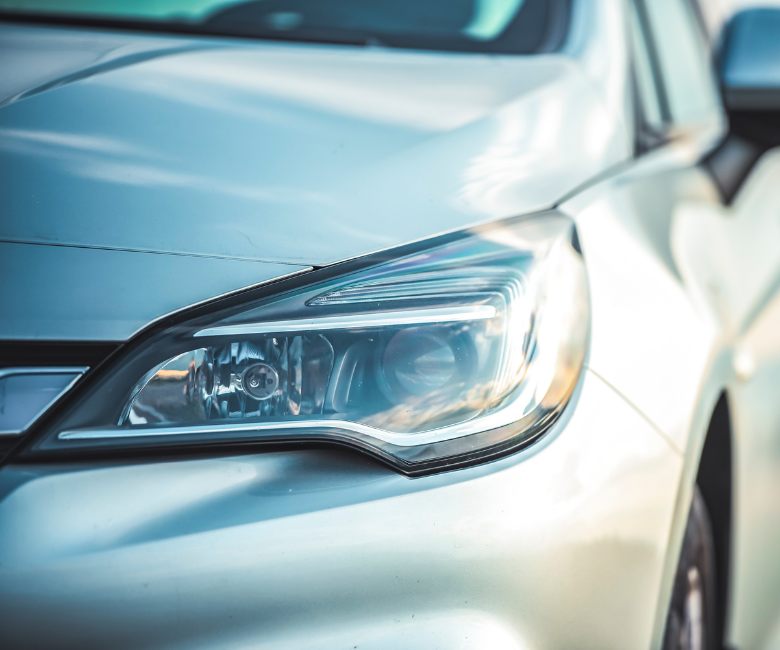
How to Adjust Your Headlights
- Vehicle Maintenance
- PEAK
- August 5, 2024
Follow along for easy steps on how to adjust your headlights.
Misaligned headlights can lead to safety hazards, both for you and other motorists. If you're noticing signs that your headlights aren't positioned correctly, it's time for a headlight adjustment.
The signs of misaligned headlights are most noticeable at night, and include:
- Uneven illumination of a straight road surface
- You can't properly see road signs, or miss them altogether
- You're late detecting or reacting to obstacles or changes in road direction
You may also notice drivers in opposing lanes flashing their headlights at you. This typically indicates that your headlights are shining into their eyes when they should be shining onto the road ahead of you.
This post explains how to adjust your car headlights and correct the issue.


Perform a DIY Headlight Adjustment in 5 Easy Steps
If you don't know how to adjust car headlights, don't sweat it. The task is fairly simple if you're equipped with the right know-how.
Follow these five steps:
1. Check your headlight alignment
To begin, check the alignment of your headlights to make sure you aren't misdiagnosing the problem. Start with your car parked on a flat, even surface facing a wall or garage door.
Then:
- Bring your car about 5 feet from the wall or garage door and turn on your regular (low) beams.
- Use masking tape to mark spots on the wall that line up with the center of both headlight lenses. Make horizontal and vertical markings for both headlights.
- Back the vehicle up until you're about 25 feet from the taped surface.
- Turn on your low beams.
- Your tape lines should roughly align with the brightest parts of your headlight beams.
2. Consult your owner's manual
If your test reveals misalignment, retrieve your owner's manual. It may provide detailed instructions on how to adjust your car headlights. If it does, follow the indicated steps since your owner's manual is the best source of vehicle-specific information.
Otherwise, proceed as follows:
3. Locate your headlight adjusters
Headlight adjusters allow you to make incremental changes in the orientation of your headlight bulbs. You'll usually find them on the side or the back of your headlight's housing unit. Rarely, manufacturers place headlight adjusters on the bottom of the housing.
Most manufacturers clearly label headlight adjusters. If you don't see any labeling, look for a little silver or gray bolt or screw that's readily visible against your headlight housing's black backing.
If you've looked everywhere for your headlight adjusters but can't find them, your owner's manual should tell you exactly where they are and how to access them.


4. Establish a baseline
This step is similar to the initial test you performed at the outset, but involves some extra work. You can spare yourself the extra steps if your initial check showed that your headlights are indeed aligned correctly.
If you need to complete a headlight adjustment, here's how to start:
- Start on a flat, even surface.
- Pull your car as close as you can to a wall or garage door while still leaving enough room to get between the wall or door and your vehicle.
- Turn on your low beams and mark the wall or door with a continuous horizontal length of tape running through the centers of both beams at their brightest points.
- Add 2-foot vertical lengths of tape that run through the centers of each beam.
When you're done, back up until you're 25 feet away from the wall or garage door. Use a tape measure to mark the correct distance.
(As a side note: the exact distance to use may vary, depending on your vehicle. For example, Toyota recommends a distance of about 10 feet for some models, while Chrysler recommends 33 feet. Again, your owner's manual is the best source of specific information.)
5. Complete your headlight adjustment
Here's how to finish the task:
- Use a dark cloth to cover one headlight.
- Check where the center of the uncovered headlight beam shines relative to your tape markings. The vertical line should line up perfectly with the brightest part of the beam, while the horizontal line should be perfectly aligned with or slightly above the center of the beam.
- Adjust your headlights using your vehicle's headlight adjuster, going about a quarter of a turn at a time until the brightest part of the beam hits your tape markings in the correct place.
- Repeat this process for the other headlight, covering up the headlight you just fixed.
The vast majority of cars use only a single adjuster for both low and high beams, so your high beams will automatically reset when you adjust your low ones.
That's all there is to it!
Preventing Headlight Misalignment
Now that your headlights are properly aligned, let's review some strategies for keeping them that way. The key here is to understand how headlights become misaligned in the first place.
Major causes of headlight misalignment include:
- Heavy cargo loads. If you're carrying or towing heavy cargo, your vehicle may undergo a subtle shift in its ride height. This can result in slight changes in the positions of one or both of your headlights.
- Problems with your car suspension. Suspension problems can also impact your vehicle's ride height, potentially resulting in headlight misalignment.
- A displaced headlight assembly. Newer vehicles typically use lightweight headlight assembly components, which can become brittle with time. They are also very sensitive to physical contact, and even a slight bump involving your vehicle's front end can affect your headlight orientation.
- Misadjusted settings. Your vehicle's automatic headlight leveling system might have become miscalibrated, or you may have fiddled with the wrong dial on your instrumentation panel and adjusted your headlights accidentally.
Also, some older headlights use components called diffusion discs to soften light. Over time, road debris can crack or scratch the discs, changing the way your headlights distribute their illumination.
If you have any reason to suspect misalignment, perform a quick check as described above to see if you need a headlight adjustment. For instance, you may want to do this after towing a very heavy load, or if you were in a fender-bender or other physical contact incident involving the front end of your vehicle.
Take immediate corrective action and perform a headlight adjustment if your check reveals an issue.
Take extra care when changing your headlights
Misalignments can also happen when you change your headlights. Even a slight placement error or mistake with your headlight assembly can leave your new lights positioned incorrectly. To avoid that, follow these headlight replacement tips.
If you're in the market for new headlights, PEAK Auto has plenty of appealing options. For premium performance at an economical price, Power Vision headlights deliver every time. The Power Vision line also includes multiple specialty products, including:
- Power Vision Silver for a strong, halogen-like white glow
- Power Vision Gold for maximum road illumination
- Power Vision Xenon shine with a brilliant, luxurious luster
Supplement with plug-and-play PEAK Ultra Vision LED fog lights to further enhance your visibility, especially if you regularly drive in low light or rainy weather.
These and the other premium automotive lighting products in our brand family deliver PEAK visibility and help you stay safe no matter what driving conditions you face.

